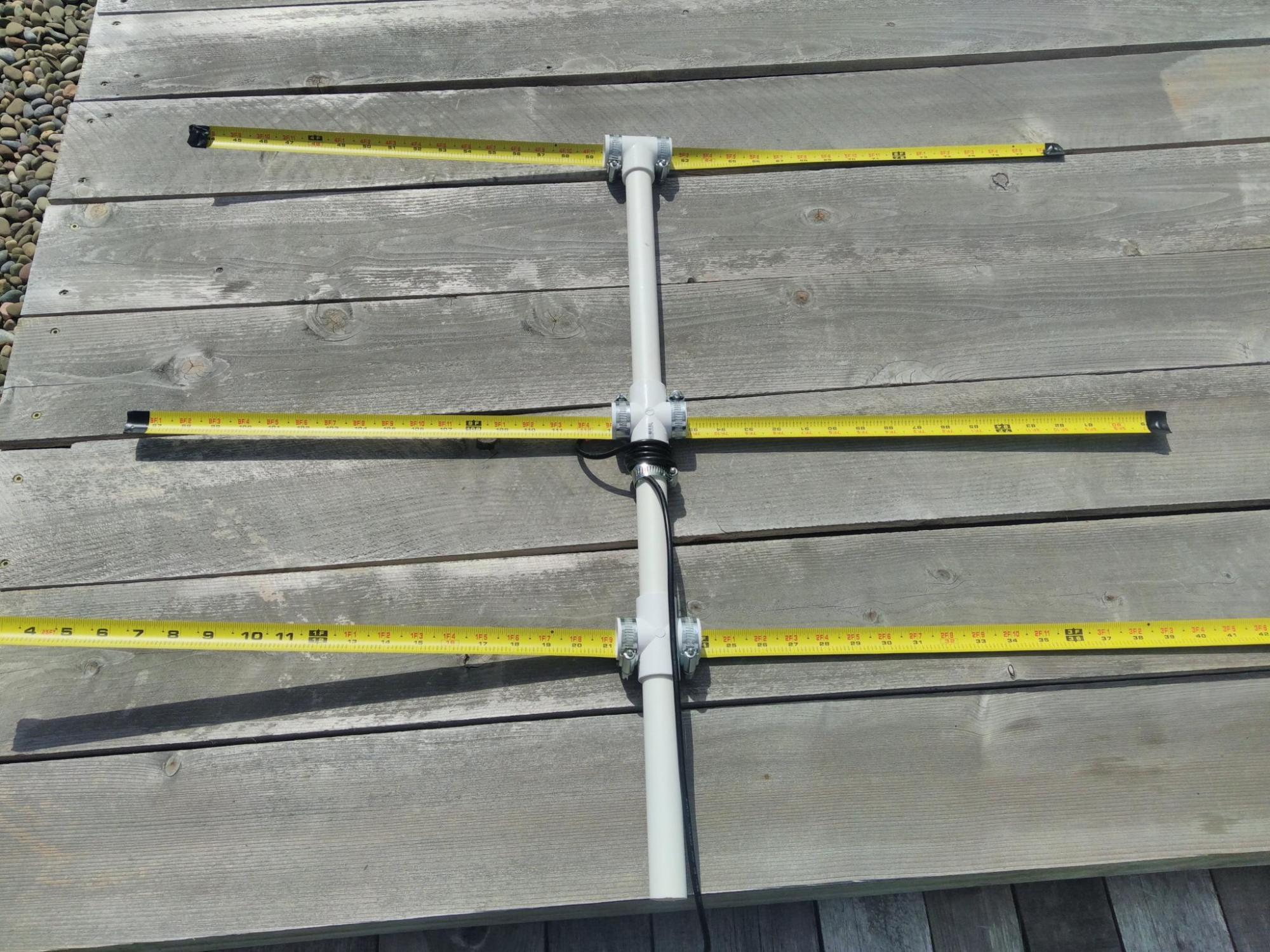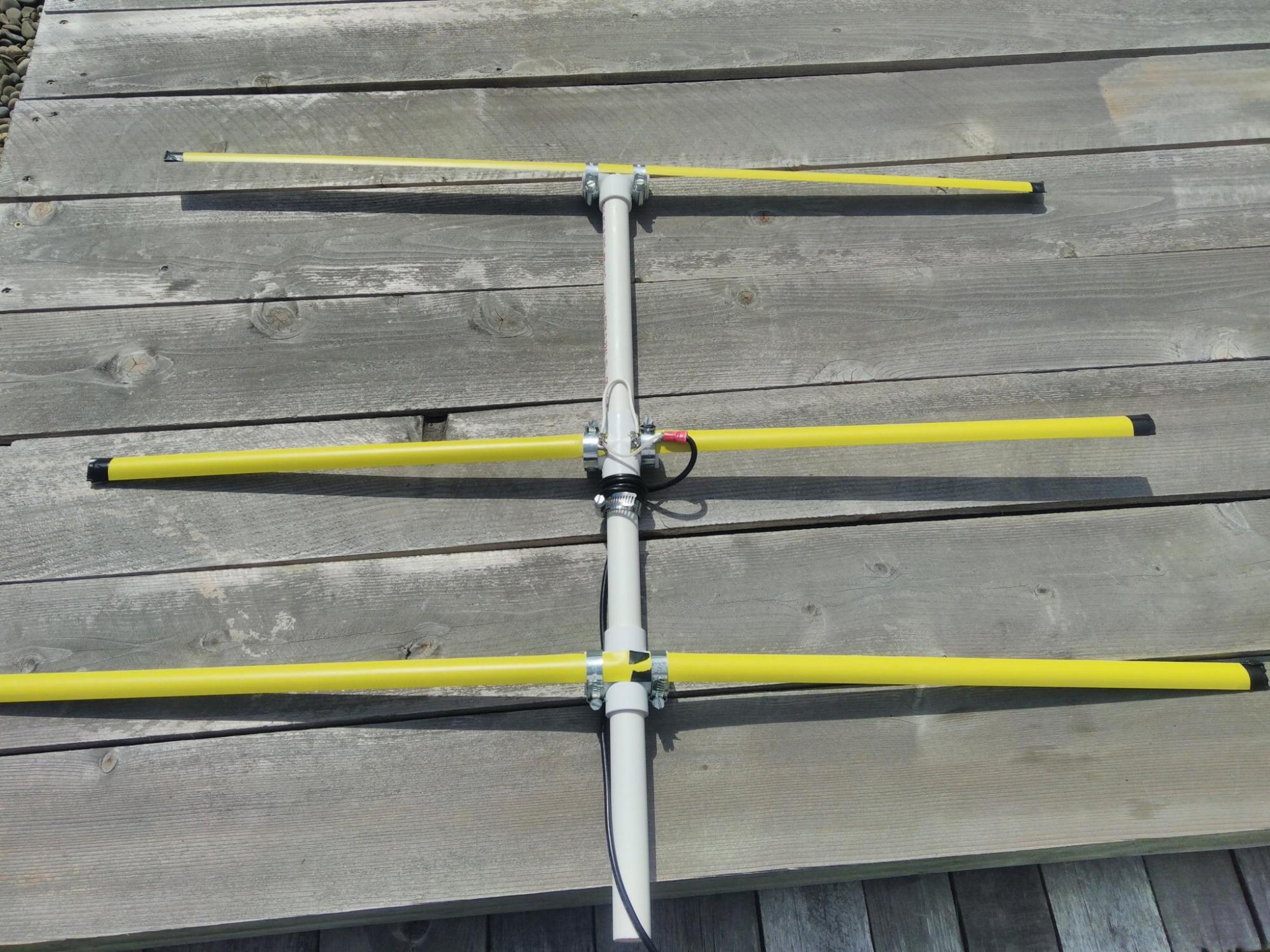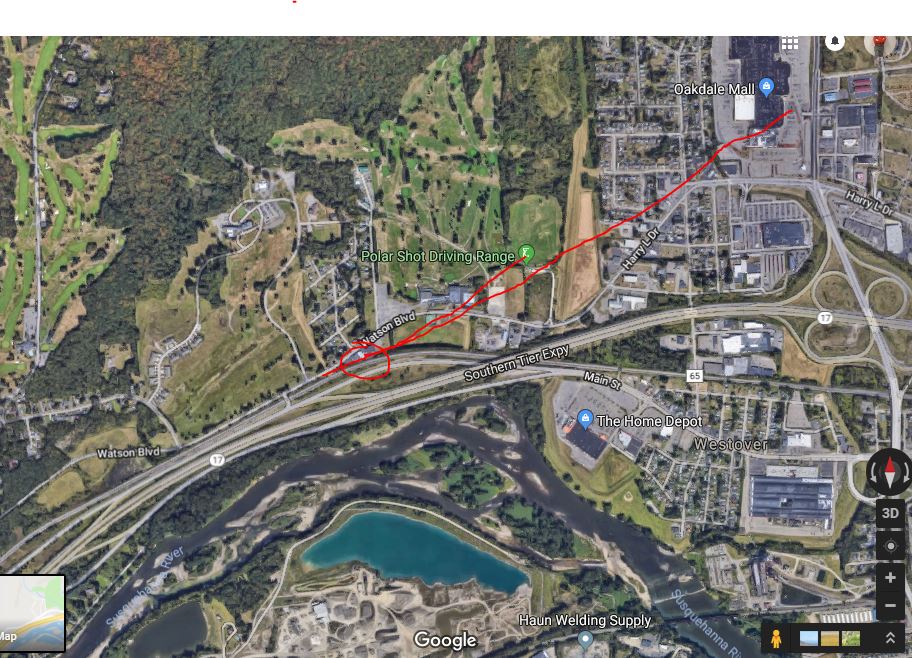A few months ago I had the opportunity to participate in something called a “fox hunt” – or a hidden transmitter hunt – with the Binghamton Amateur Radio Association (BARA). This activity brings together a group of people to find a radio transmitter which has been hidden and is broadcasting on a specific frequency; they are tasked with finding the transmitter based on radio signal strength, which is usually accomplished by using a directional antenna, such as a yagi antenna. The term ‘directional’ in the context of radio antennas means that the antenna picks up a signal best when it is aimed at the source.
Prior to the hunt taking place, BARA offered a class where we made directional yagi antennas out of cheap, simple materials like PVC pipe and tape measures (see pictures below). I used the antenna I created with a radio having an ‘s’ meter, or signal strength meter, so that I could visually observe and measure signal strength of the hidden ‘fox’ (or transmitter). The general strategy of ‘foxhunting’ is to find at least 2 places where you can point the antenna and “shoot a bearing” (get a compass direction) on the signal; where these two imaginary lines intersect on a map should be close to where the hidden transmitter is located. This strategy is similar to how cell phone signal triangulation and the GPS works!
I started searching for the ‘fox’ at my house, moving my antenna in all directions while listening in on the pre-specified frequency. I didn’t hear anything, so I decided to drive to the Oakdale Mall to see if I could hear anything from there. When I tried again from the mall, I could hear a signal with medium strength (S5) on that frequency when my antenna was aimed towards Endicott, so the next step was to drive towards Endicott to get another ‘fix’ on the signal’s transmitting location.
Driving towards Endicott on Watson Blvd., I stopped to shoot a bearing at the Polar Driving Range. I was getting an extremely strong (S9) signal reading from there, so I figured that the transmitter must be close by. As it turned out, the hidden transmitter WAS nearby: it was hidden at the Elk’s Club on Watson Blvd.
Fox hunts are a great way to develop skills in orienteering, and can be useful for search and rescue operations as well! These skills will also come in handy on my upcoming high altitude balloon project, in which I’ll track the balloon using APRS and hopefully recover it using readings of the balloon transmitter’s signal strength at its landing site. I’m looking forward to my next fox hunt!
Picture credits:
All photos provided and owned by Gary Dewey.



